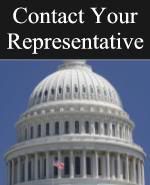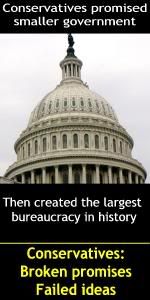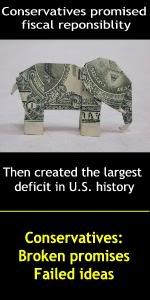Studies show immigrants driving force in tech growth
For the most part, the debate over immigration reform has centered on the influx of millions of low-skilled, economic migrants entering the country without documentation to take jobs in agriculture, construction and service industries.
Yet, behind the scenes, a controversy has been raging that does not deal with those who entered the country illegally, but rather with those who have entered through legal channels with visas issued for work. The debate over reform of the work visa program, and particularly H1b specialty visas, has been the most contentious of all. The H-1B visa program allows American companies and universities to hire foreign scientists, engineers, computer programmers and other high-skilled workers. In 2003, in response to the bursting tech bubble, the yearly cap on H1b visa was decreased from 195,000 to 65,000. Since then a war of words has raged between businesses who claim they must have access to the worlds brightest minds and professional organization and unions that feel the H1b system is too easily manipulated by corporate interests to the detriment of US workers.
A couple of new studies shed some light on this debate
tags: immigration, studies , H1b visa, tech workers
As with all things immigration related, there are arguments on both sides of this debate that are black and white … but as usual the truth lies in the area that is considerably more gray.
Do H1b workers lower the wages of native-born tech workers? Do US businesses need these workers for their special skills? Compelling arguments have been made on both sides of the issue. Just like the arguments over the economic benefits and costs of undocumented, low-skilled workers, the arguments for and against these highly educated, skilled workers cannot be viewed in a vacuum devoid of the complexities of long term economic and societal trends.
Two complementary studies have recently been released looking at one long term effect of immigration of high skilled workers. "American Made: The Impact of Immigrant Entrepreneurs and Professionals on U.S. Competitiveness", released last November by the National Venture Capital Association, looked at immigrant participation in launching venture capital backed business, and "America’s New Immigrant Entrepreneurs", released yesterday by Duke Universities Pratt School of Engineering and University of California, Berkeley, examined the role immigrants have played in engineering and technology company start-ups from 1995-2005. Both studies concluded that immigrants, and the H1b visas that allow them to work and live in the US, have played a major role in creating many of the companies and jobs that keep the tech industry running.
"America's New Immigrant Entrepreneurs'' found that nationwide, 25 percent of all tech and engineering start-ups have founders who are immigrants while "American Made: The Impact of Immigrant Entrepreneurs and Professionals on U.S. Competitiveness" found that 47 percent of venture-backed start-ups were started by foreign born entrepreneurs. These numbers are striking given the fact that the foreign-born represent only 11.7% of the total population.
The Duke study looks at two main aspects of immigrant contributions to the economy; companies started by immigrants and international patents issued to immigrant inventors.
What is clear is that immigrants have become a significant driving force in the creation of new businesses and intellectual property in the U.S. — and that their contributions have increased over the past decade.
Here are some characteristics of the engineering and technology companies started in the U.S. from 1995 to 2005.
…
…based on an analysis of the World Intellectual Property Organization (WIPO) patent databases, that foreign nationals residing in the U.S. were named as inventors or co-inventors in 24.2% of international patent applications filed from the U.S. in 2006.
Over half (52.4%) of Silicon Valley startups had one or more immigrants as a key founder, compared with the California average of 38.8%.
"America’s New Immigrant Entrepreneurs"
Duke researchers started with a list of 28,766 companies founded in the U.S. in the last ten years classified as technology and engineering companies in Dun and Bradstreet's Million Dollar Database. The list contains U.S. companies with more than $1 million in sales, and 20 or more employees, and company branches with 50 or more employees. This database is commonly used by researchers and is considered a reliable source. Researchers were able to reach senior executives to determine the backgrounds of key founders for 2,054 of the tech startups.
This study builds on the 1999 research of AnnaLee Saxenian, dean of the School of Information at UC-Berkeley, which focused on the development of Silicon Valley’s regional economy and the role immigrant capital and labor in the process. “Silicon Valley’s New Immigrant Entrepreneurs” found that that Chinese and Indian engineers ran a growing share of Silicon Valley companies and they were at the helm of 24% of the technology businesses started from 1980 to 1998.
The study from NVCA, although obviously from a more partisan source than the other studies, compliments and highlights much of the same ground covered by both Saxenian in 1999 and the current Duke/Berkley study. Using the Thomson Financial database the authors surveyed over 340 privately held venture-backed companies to discern the demographic data on their founders.
Immigrant-Founded Public Venture-Backed Companies
NVCA conducted a survey, with 342 respondents, to gather data on immigrant entrepreneurs at today’s smaller, private venture-backed companies and to gain a wider perspective on company viewpoints on immigration.
American Made: The Impact of Immigrant Entrepreneurs and Professionals on U.S. Competitiveness
One reason for the disproportionate amount of immigrants leading US tech firms might be found in some data from Saxenian's 1999 study.
Not surprisingly, Silicon Valley's Indian and Chinese workforce is highly educated. In 1990, they earned graduate degrees at significantly greater rates than their white counterparts: 32 percent of the Indian and 23 percent of the Chinese employed in Silicon Valley in 1990 had advanced degrees, compared to only 11 percent for the white population. Their superior educational attainment is even more pronounced in technology industries: 55 percent of Indian and 40 percent of Chinese technology workers held graduate degrees, compared to 18 percent of whites.
Silicon Valley’s New Immigrant Entrepreneurs
This educational gap between US and foreign workers was also noted in testimony before the Senate Judiciary Committee back in September of 2005 when the Subcommittee on Immigration, Border Security, and Claims was investigating the possibility of foreign nationals engaging in economic or military espionage. William A. Wulf, Ph.D., President of the National Academy of Engineering warned of the growing educational gap between US workers and their foreign counterparts.
After WW II, the U.S. forged a mutually reinforcing triad of complementary R&D strengths in industry, academia and government. However, U.S. industrial laboratories have greatly reduced their support for long-term basic research; and many U.S. corporations are shifting research and development to overseas locations—not just because foreign labor is cheaper, as is the common and comfortable myth, but because it is of higher quality! U.S. government laboratories are in various states of disarray, and no longer maintain the stature that they did in 1960’s. Government support for the physical sciences and engineering at universities has declined in real terms, and is suffering further under present budget pressures – clearly, a strong research capability is not a current federal priority. Enrollment in the physical sciences and engineering, as a percentage of undergraduates, is among the lowest in the industrialized world – the U.S. now graduates just 7% of the world’s engineers, for example. Given that our 12th graders score among the lowest in the world in science and mathematics, the ranks of U.S. born scientists and engineers are not likely to expand dramatically anytime soon. Our once strong triad of R&D capabilities is crumbling.
At the same time, science and technology are growing rapidly in other parts of the world. Over 70% of the papers published in the American Physical Society’s world leading journals, The Physical Review and Physical Review Letters, now come from abroad
The Importance of Foreign-born Scientists and Engineers to the Security of The United States
As stated earlier, nothing about immigration and the debate that swirls around it is ever easy to analyze in simple terms of black and white. These entrepreneurs and the businesses and jobs they create are only one small part of the big immigration puzzle. Clearly they have made great contributions to our economy and society, but the H1b story is complex and multifaceted. Next month the anti-immigration advocacy group, Center for Immigration Studies (CIS) will be issuing their own study on H1b visas and their effects on the economy. Their finding…the bulk of H1b visas are issued to low-level workers that receive low wages that undercut US workers.
All I can say is ….you be the judge.

































No comments:
Post a Comment